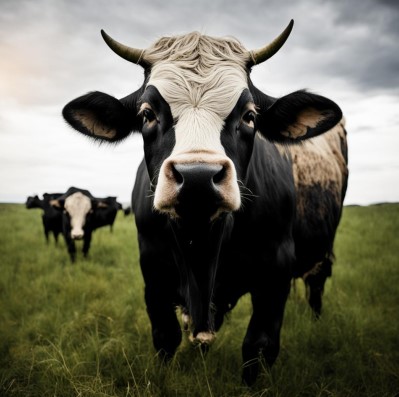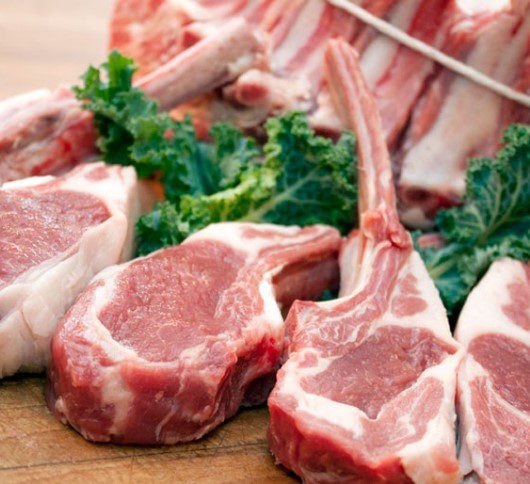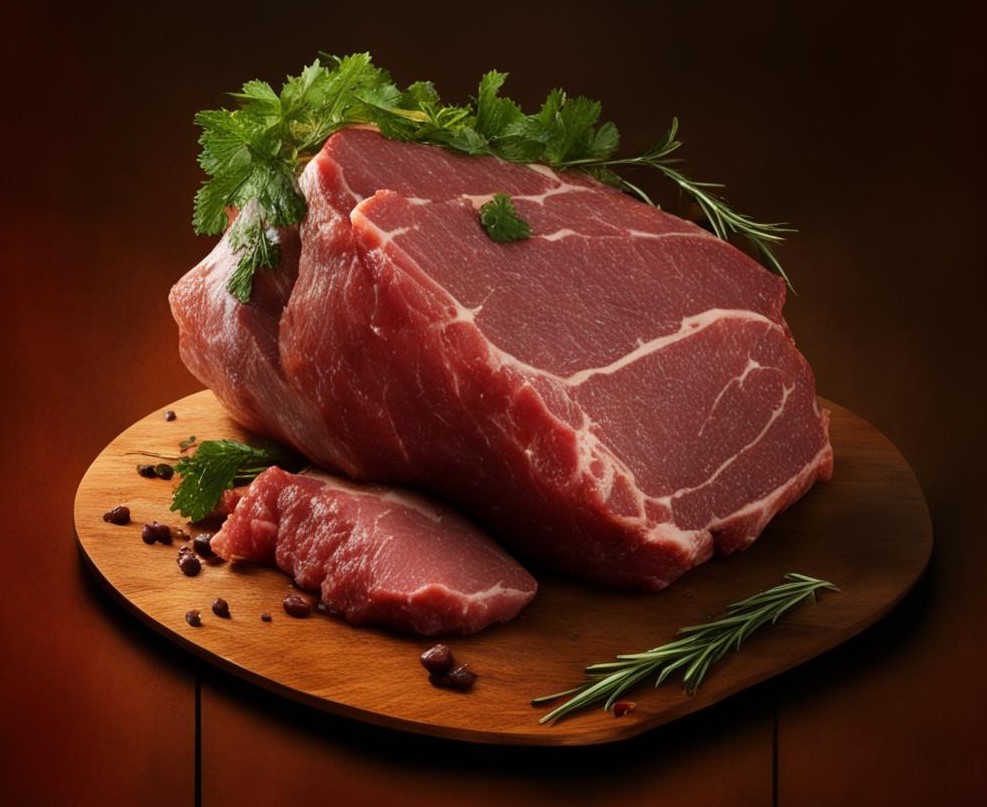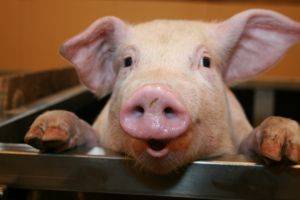- Antibiotics Tests in Milk
- Inhibitory detection test
- Laboratory equipment
- Centrifuges
- Indicator strips
- Autoclaves
- Scales
- Thermometers
- Packing
- PureTrust ATP monitoring
- ATP monitoring PIONEERPRODUKT CleanTrust
- MICROFAST® substrates
- Nutrient media
- Ice cream sticks
- Consumables
- Detergents and disinfectants
- Treatment agent
- Milk filters
- Wipes
- Gloves
- Sampling
EU pork production is at its lowest level in almost a decade
All key producing countries saw significant declines, but Germany was the most notable, Shuttleworth said. Although Germany has seen a decline in production since 2017, the annual decline is only 2-3%, but in 2022 the annual decline was almost 10%. This is a loss of almost half a million tons in 12 months. Poland, Spain, Denmark and Belgium recorded a decline in annual production of 110,000-180,000 tons in 2022.
The reduction in slaughter was the driving force behind the decline in production. The total slaughter of pigs in the EU-27 in 2022 was 237 million heads, the lowest recorded figure since 2014 and a sharp year-on-year decrease of 12.6 million heads (-5.1%). The largest decline by country was observed in Germany (-4.8 million heads), Poland (-1.9 million heads), Spain (-1.7 million heads) and Belgium (-1.1 million heads).
The downward trend continues and explains much of the decline in the number of slaughtered pigs. In 2022, the pig herd in the EU decreased by 5.8% as a result of problems faced by producers and processors. What will matter more to the market in the future is a -6.2% reduction in the number of breeding sows. The decline in this number of sows indicates that we should see a reduction in the number of pigs available for slaughter in 2023 and supports broader industry comment about limited supply. This could mean that high hog prices will continue to persist in the EU if domestic consumption remains stable, as projected in the latest short-term EU forecast. In the longer term, both pork consumption and production are projected to decline, which,
 Rapid 4 in 1 tests for determining the residual amount of neomycin, kanamycin, gentamicin, spectinomycin in milk, whey
Rapid 4 in 1 tests for determining the residual amount of neomycin, kanamycin, gentamicin, spectinomycin in milk, whey PIONEER MEIZHENG BIO-TECH (5 in1) JC0871/ Rapid tests for the determination of the residual amount of β-lactams, tetracyclines, chloramphenicol, streptomycins, ceftiofur in milk, whey.
PIONEER MEIZHENG BIO-TECH (5 in1) JC0871/ Rapid tests for the determination of the residual amount of β-lactams, tetracyclines, chloramphenicol, streptomycins, ceftiofur in milk, whey. Express tests for determining the residual amount of β-lactams, tetracyclines, chloramphenicol, streptomycins in milk, whey
Express tests for determining the residual amount of β-lactams, tetracyclines, chloramphenicol, streptomycins in milk, whey PIONEER MEIZHENG BIO-TECH (5 in 1) JC0726 / Rapid tests for determining the residual amount of Bacitracin, ansamycins, clindamycin, spiramycin, florfenicol in milk, whey
PIONEER MEIZHENG BIO-TECH (5 in 1) JC0726 / Rapid tests for determining the residual amount of Bacitracin, ansamycins, clindamycin, spiramycin, florfenicol in milk, whey
 Laboratory heating plate PL-01
Laboratory heating plate PL-01 Exhaust cabinets
Exhaust cabinets Areometer AON - 1 (set of 19)
Areometer AON - 1 (set of 19) Magnetic stirrer with heating function WH240-HT
Magnetic stirrer with heating function WH240-HT Laboratory thermostat-reductor LTR
Laboratory thermostat-reductor LTR Milligram weights
Milligram weights- Analyzer of somatic cells in milk "SOMATOS Mini"
- Indicator strips "CHAS-100 mg",100 pcs
- Bürkle Qualirod tapered sampler 120 and 170 mm immersion depth
- Thermohygrometer IVA-6AR (Russia)
- Stationary pH meter/millivolt meter/thermometer (pH/mV/ORP/T) Edge HI 2202-01
- Smooth micrometers MK
- Navigator NV222 mastoprim weighing scale, (220 g, 0.01 g, external calibration)
- RT5 Multi-Magnetic Stirrer with Heating, IKA
- pH electrodes Hanna Instruments (Germany)
 Cartons for milk and dairy products
Cartons for milk and dairy products Ice cream sticks Magnum (curly)
Ice cream sticks Magnum (curly) Pepsin whey pork
Pepsin whey pork GableTop aseptic packaging
GableTop aseptic packaging Auxiliaries for sugar products
Auxiliaries for sugar products Ice cream sticks (with logo)
Ice cream sticks (with logo)- Ice cream sticks (round)
- Ice cream sticks Standard 93
- J-Bottom technology
- Wafer cup and cone
- Petri dish 90 mm
- General purpose environment of SPC "Biocompass-S" (Uglich)
- Ice cream sticks Standard 114
 MicroFast® Microbiological Substrates
MicroFast® Microbiological Substrates MicroFast® Staphyloccocus aureus Confirmation Plate Staph.aureus Confirmation Plate (cat. no. LR1005Q)
MicroFast® Staphyloccocus aureus Confirmation Plate Staph.aureus Confirmation Plate (cat. no. LR1005Q) Yeast & Mold Count Plate (cat. no. LR1003) MicroFast® Yeast & Mold Count Plate
Yeast & Mold Count Plate (cat. no. LR1003) MicroFast® Yeast & Mold Count Plate Substrate for determining the number of staphylococci (Catalog number LR1005) MicroFast® Staphyloccocus aureus Count Plate
Substrate for determining the number of staphylococci (Catalog number LR1005) MicroFast® Staphyloccocus aureus Count Plate MicroFast® Coliform & E.coli Count Plate
MicroFast® Coliform & E.coli Count Plate MicroFast® Lactic Acid Bacteria Count Plate (Part Number LR1312)
MicroFast® Lactic Acid Bacteria Count Plate (Part Number LR1312)- MicroFast® Salmonella Count Plate (SAL), for the determination of Salmonella in food and environmental samples (Catalog #LR1006)
- MicroFast® Bacillus cereus Count Plate (catalog number LR1010)
- Substrate for determining QMAFAnM (catalog number LR1001)
- MicroFast® Enterobacteriaceae Count Plate (cat. no. LR1011)
- MicroFast® Environmental Listeria Count Plate
- Coliform Count Plate (catalog number LR1002) MicroFast® Coliform Count Plate
- Substrate for accelerated determination of QMAFAnM, (catalog number LR1321)
 Robotics and space systems: what developments did Belarus present at the Forum of Regions27.06.2025
Robotics and space systems: what developments did Belarus present at the Forum of Regions27.06.2025 The National Bank is launching the "New Champions" project to develop small and medium businesses27.06.2025
The National Bank is launching the "New Champions" project to develop small and medium businesses27.06.2025 Какие преференции даст странам ЕАЭС торговое соглашение с ОАЭ, рассказал эксперт27.06.2025
Какие преференции даст странам ЕАЭС торговое соглашение с ОАЭ, рассказал эксперт27.06.2025- Fine cheeses and drinks with a history. How an agrotown in the Myadel district became a center of industrial tourism.27.06.2025
- MFA: Belarus can make a serious contribution to ensuring food security in Mongolia26.06.2025
- Belarus and Cuba have identified promising growth points in trade. Lukashenko has announced the details 25.06.2025
- Беларусь на 10% увеличила биржевой товарооборот со странами ЕАЭС23.06.2025
- Farm Workshop, Summit Prep, Distinguished Alumni, and Trump's Special Envoy: President's Week in Review22.06.2025
- АПК, промышленность, туризм. Гомельская область на ПМЭФ обсуждает развитие партнерства с регионами России20.06.2025
- For several years they have been the first in the region. We asked the director of OAO Dembrovo what the secret of the enterprise's success is 20.06.2025
- Упрочить стабильность. МАРТ объяснил необходимость контроля цен на мясо, молоко и сладости20.06.2025
- Правительство взяло на особый контроль ценообразование на мясо-молочную продукцию и кондитерские изделия 20.06.2025
- "It's cooler than space!" How BNBC turns a grain of wheat into proteins essential for humans19.06.2025
- Что стоит за принятием взвешенных управленческих решений на предприятиях, рассказала Медведева19.06.2025
- Кексы с капустой: оригинальная выпечка для любого повода18.06.2025
- Предприятия Гомельской области в 1,7 раза нарастили экспорт в Россию через БУТБ18.06.2025
 Перспективные тренды кадрового обеспечения агропромышленного комплекса17.09.2025
Перспективные тренды кадрового обеспечения агропромышленного комплекса17.09.2025 Россия извлекает выгоду из торговых противоречий между Китаем и Западом17.09.2025
Россия извлекает выгоду из торговых противоречий между Китаем и Западом17.09.2025 Увеличение экспорта свинины России: новые горизонты на зарубежных рынках17.09.2025
Увеличение экспорта свинины России: новые горизонты на зарубежных рынках17.09.2025- Construction of a full-cycle poultry farm worth 13.3 billion rubles to begin in Khabarovsk17.09.2025
- Russia's largest rabbit-catching complex supplies the Smolensk region with high-quality meat.17.09.2025
- США сохранят запрет на экспорт крупного рогатого скота из Мексики до 2026 года17.09.2025
- США подтвердили наличие высокопатогенного птичьего гриппа в молочном стаде в Небраске17.09.2025
- Uruguay Changes Meat Market: What Argentina Can Learn17.09.2025
- Аргентина: Правительство определяет новую стратегию вакцинации против ящура17.09.2025
- Center-Reserve launches full-cycle meat production in the Stavropol region17.09.2025
- Crimea boosts milk and meat production by developing elite cattle breeding17.09.2025
- Первая партия голштинских бычков экспортирована в Таджикистан17.09.2025
- Перспективы отечественного рынка говядины остаются позитивными, несмотря на снижение поголовья17.09.2025
- Ростовская область экспортировала 148 тонн мяса птицы за первые дни сентября17.09.2025
- Неожиданные добавки в пельменях: производитель оштрафован в Красноярском крае17.09.2025
- Chicken prices in Russia: average level reaches 354 rubles per kilogram17.09.2025
 ЕС перед встречей Путина и Трампа пообещал новые санкции против России14.08.2025
ЕС перед встречей Путина и Трампа пообещал новые санкции против России14.08.2025 «Евротройка» заявила ООН о готовности вернуть санкции против Ирана14.08.2025
«Евротройка» заявила ООН о готовности вернуть санкции против Ирана14.08.2025 SCMP узнала о застрявших из-за санкций в России китайских самолетах14.08.2025
SCMP узнала о застрявших из-за санкций в России китайских самолетах14.08.2025- Китай ввел ответные санкции против двух банков Евросоюза14.08.2025
- Россиянам под санкциями разрешили въезд на Аляску для участия в саммите14.08.2025
- Китай ответил на угрозы Трампа о новых пошлинах из-за российской нефти09.08.2025
- Trump answered a question about the timing of the introduction of anti-Russian sanctions08.08.2025
- Foreign Policy identified a group of D7 countries with the risk of “domino devaluations”07.08.2025
- FT finds out what outcome of Whitkoff's visit to Russia will "infuriate" Trump06.08.2025
- Reuters finds out how the Kremlin assessed Trump's ultimatum06.08.2025
- Зеленский заявил о «продуктивном» разговоре с Трампом о санкциях и России06.08.2025
- FT узнала о «легком первом шаге» США в расширении санкций против России06.08.2025
- Trump says he will decide on sanctions after Russia-US meeting06.08.2025
- Демократы обвинили Трампа в ослаблении санкций против России06.08.2025
- Zelensky announces sanctions against captains of Russian shadow fleet05.08.2025
- Trump reveals what will happen after his ultimatum expires05.08.2025
 Antibiotics: harm or benefit17.07.2019
Antibiotics: harm or benefit17.07.2019 Antibiotics in milk16.07.2019
Antibiotics in milk16.07.2019
 Antibiotics in Meat: Prevention, Regulation and Consumer Health Concerns12.01.2024
Antibiotics in Meat: Prevention, Regulation and Consumer Health Concerns12.01.2024 Antibiotics in Fried or Boiled Meat: Facts and Misconceptions12.01.2024
Antibiotics in Fried or Boiled Meat: Facts and Misconceptions12.01.2024 Antibiotics in Sausage: Reality, Risks and Need for Control12.01.2024
Antibiotics in Sausage: Reality, Risks and Need for Control12.01.2024- Antibiotics in Pelmeni: Real Threat or Myth?09.01.2024
- Antibiotics in Pork: Health Effects and Cooking Recommendations08.01.2024
- Antibiotics in Chicken: Safety, Regulation and Consumer Health Concerns08.01.2024
- Antibiotics in meat: problems and solutions06.01.2024
- Antibiotics in Beef: Between Animal Health and Consumer Safety06.01.2024
- Antibiotics in Chicken Meat: Safety, Regulation and Concern for Consumer Health06.01.2024
- Antibiotics in Rabbit Meat: Safety, Efficiency and Care for Consumers05.01.2024
- Antibiotics in Pork: Balance Between Health Concerns and Consumer Safety03.01.2024
- Antibiotics in Lamb03.01.2024
- Antibiotics in Meat: Real Risks and Transparency in Food Production29.12.2023
 Marbled meat: 10 interesting facts19.01.2024
Marbled meat: 10 interesting facts19.01.2024 10 Fascinating Facts About Cattle Hoof Baths18.01.2024
10 Fascinating Facts About Cattle Hoof Baths18.01.2024 Antibiotics - 10 interesting facts18.01.2024
Antibiotics - 10 interesting facts18.01.2024- Cutlets - 10 interesting facts18.01.2024
- 10 Interesting Facts about Carp17.01.2024
- Salmon - 10 Interesting Facts17.01.2024
- Beer belly 10 interesting facts17.01.2024
- Beer - 10 interesting facts17.01.2024
- Antibiotic tests pioneer - 10 interesting facts17.01.2024
- Rubber rings for castration - 10 interesting facts17.01.2024
 Dicroceliosis in cattle09.03.2024
Dicroceliosis in cattle09.03.2024 Demodicosis in cattle01.03.2024
Demodicosis in cattle01.03.2024 Purulent mastitis of cattle27.02.2024
Purulent mastitis of cattle27.02.2024- Hypodermatosis in cattle20.02.2024
- Hemonchoz in cattle11.02.2024
- Bursitis in cattle30.01.2024
- Brucellosis in cattle29.01.2024
- Bronchopneumonia in calves27.01.2024
- Bronchitis in cattle26.01.2024
- Mortellaro disease in cattle24.01.2024
- White muscle disease in cattle23.01.2024
- Babesiosis in cattle22.01.2024
- Cattle acidosis20.01.2024
- Arthritis in cattle20.01.2024
- Anaplasmosis in cattle18.01.2024
 В Витебской области за выходные задержано 25 бесправников14.07.2025
В Витебской области за выходные задержано 25 бесправников14.07.2025 Drunk woman driving causes accident in Minsk 14.07.2025
Drunk woman driving causes accident in Minsk 14.07.2025 One got tired of walking and stole a bicycle, the other stole two to pawn. Both were detained13.07.2025
One got tired of walking and stole a bicycle, the other stole two to pawn. Both were detained13.07.2025- Мужчину спасли на Комсомольском озере в Минске 13.07.2025
- Mom gave me the keys. A 17-year-old motorcyclist without a license was detained in Brest district12.07.2025
- Женщина умерла от передозировки мефедроном в Кобринском районе. Возбуждены уголовные дела10.07.2025
- C 1 октября расширяется перечень товаров, подлежащих прослеживаемости10.07.2025
- В Румынии предупредили о возможном подорожании хлеба в два раза09.07.2025
- Убил мать с особой жестокостью. В Гомеле вынесли приговор жителю Петриковского района09.07.2025
- Пьяного бесправника с преследованием задержали в Гродно09.07.2025
- В Гродненской области два человека пострадали от укусов гадюки09.07.2025
- A drunk driver caused an accident in one of the courtyards of Gomel. The traffic police reported on the results of the "drunk" maneuver09.07.2025
- Consequences of heat. Since July 3, 10 children and 18 adults have sought medical attention for heat strokes08.07.2025
- Какие недостатки выявлены на детских площадках, рассказали в прокуратуре Берестовицкого района08.07.2025
- Минчанин обвинил свою гостью в краже и убил ее. СК раскрыл подробности расследования08.07.2025
- "Политико-отпускной бедлам". Шмидт о подоплеке последних событий в Польше07.07.2025
Persons
Our Partners
Top 10
Our Test - Pioneer Tests
- Express tests for determining the residual amount of β-lactams, tetracyclines, chloramphenicol, streptomycins in milk, whey
- TEST KIT for determination of inhibitory agents PIONEERPRODUKT® DASH-TEST, WC0040
- PIONEER MEIZHENG BIO-TECH (5 in1) JC0586 - Antibiotic tests 5 in 1 / Rapid tests for determining the residual amount of β-lactams, tetracyclines and cephalexin in milk, whey
- PIONEER MEIZHENG BIO-TECH (5 in1) JC0871/ Rapid tests for the determination of the residual amount of β-lactams, tetracyclines, chloramphenicol, streptomycins, ceftiofur in milk, whey.
- PIONEER MEIZHENG BIO-TECH (5 in1) JC1165 / Rapid tests for the determination of the residual amount of halofuginone, flavomycin, novobiocin, flunixin, dexamethasone / prednisolone in milk, whey








